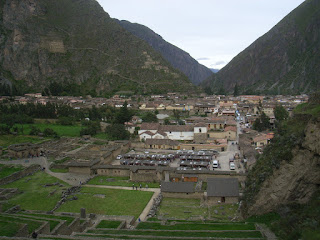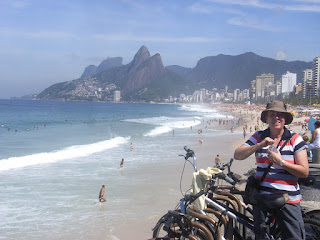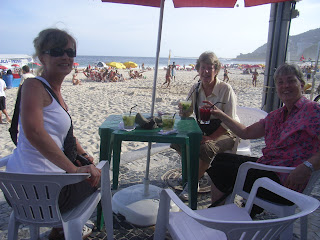More queuing to do the Argie border bumf, plus welcome hot chocolate, and on to a very cold boat for a 20 minute trip past snow covered mountains to a short bus ride to the next boat at Puerto Blest. This was a quicker boat through the gathering dark to Puerto Panuelo, where we boarded our last bus in the dark to Bariloche. Slept well that night albeit in a very overheated hotel room. The best miracle was that all luggage arrived at the correct hotel, after all these transfers, and we didn't have to worry about it at all.
 Woke the next day to very cold blustery winds and took a 3 hour bus tour of Bariloche and surrounds. Snow everywhere, which is very unusual for this region at this time (Bariloche is only 750 metres high). Mal was expecting Thredbo, but the town is very large and the district has 130,000 inhabitants. The views of many lakes and snow covered mountains are sensational - rivalling Switzerland. We took a chairlift to a lookout in freezing NW winds - we can only imagine what southerly winds would have been like.
Woke the next day to very cold blustery winds and took a 3 hour bus tour of Bariloche and surrounds. Snow everywhere, which is very unusual for this region at this time (Bariloche is only 750 metres high). Mal was expecting Thredbo, but the town is very large and the district has 130,000 inhabitants. The views of many lakes and snow covered mountains are sensational - rivalling Switzerland. We took a chairlift to a lookout in freezing NW winds - we can only imagine what southerly winds would have been like. Llao Llao
Then into town to buy chocolate which Bariloche is famed for apparently, and stroll around in hurricane like winds, to airport at 6pm for 8pm flight back to Buenos Aires. The smallish airport near the BA town centre was chaotic with apparently half of Argentina in town for Easter Sunday the next day, but we finally got our bags, and then a transfer car quite quickly.
Spent our last day here walking around BA in brilliant sunshine and 24 degree temps - back into the shorts after an extended cool spell since Puno in the high Andes.
Last view of our BA Hotel, the one with the Merc sign on top.
Plane leaves early afternoon Monday. Scheduled to arrive in Sydney at 6pm Tuesday.




 (- this photo is from the plane)
(- this photo is from the plane)












 The "pond"
The "pond"































